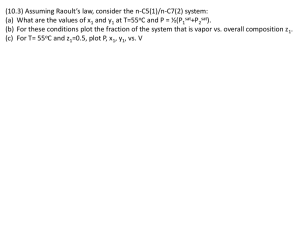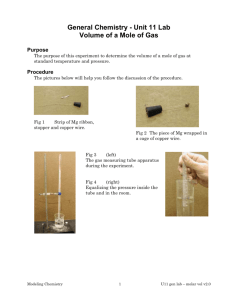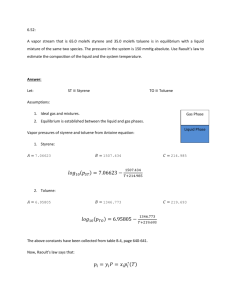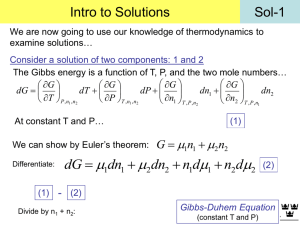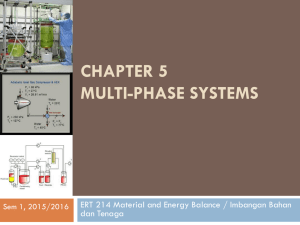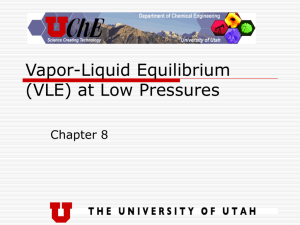1 Hypothetical Experiment Measurement of Vapor
advertisement
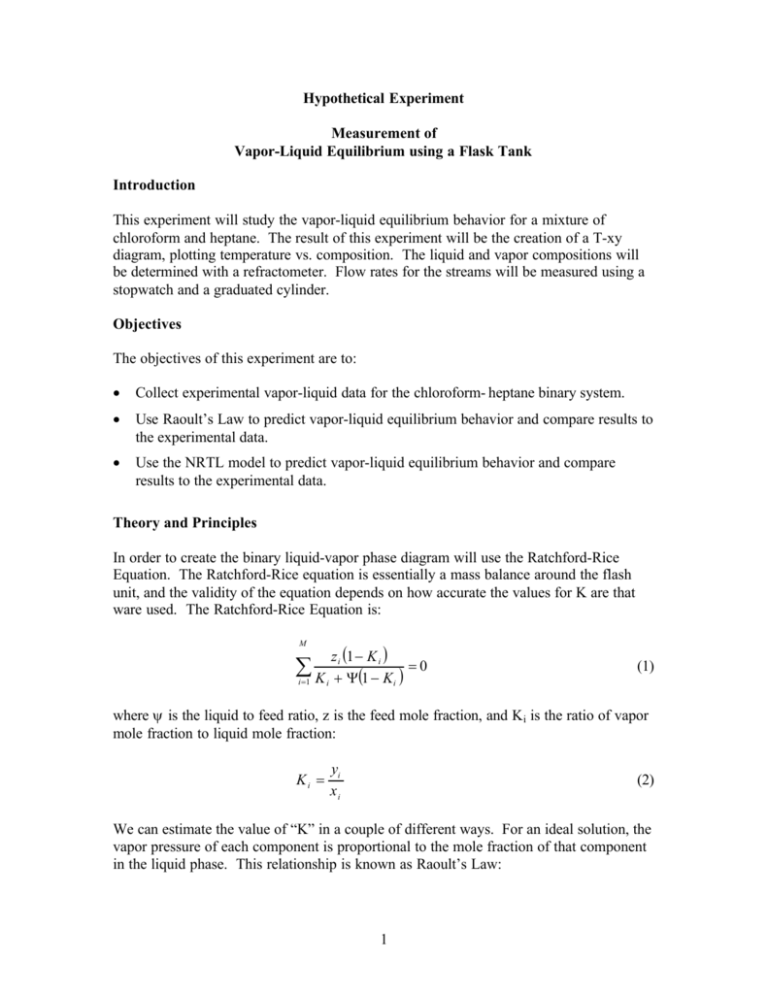
Hypothetical Experiment Measurement of Vapor-Liquid Equilibrium using a Flask Tank Introduction This experiment will study the vapor-liquid equilibrium behavior for a mixture of chloroform and heptane. The result of this experiment will be the creation of a T-xy diagram, plotting temperature vs. composition. The liquid and vapor compositions will be determined with a refractometer. Flow rates for the streams will be measured using a stopwatch and a graduated cylinder. Objectives The objectives of this experiment are to: • Collect experimental vapor-liquid data for the chloroform- heptane binary system. • Use Raoult’s Law to predict vapor-liquid equilibrium behavior and compare results to the experimental data. • Use the NRTL model to predict vapor-liquid equilibrium behavior and compare results to the experimental data. Theory and Principles In order to create the binary liquid-vapor phase diagram will use the Ratchford-Rice Equation. The Ratchford-Rice equation is essentially a mass balance around the flash unit, and the validity of the equation depends on how accurate the values for K are that ware used. The Ratchford-Rice Equation is: M ∑K i =1 z i (1 − K i ) =0 i + Ψ (1 − K i ) (1) where ψ is the liquid to feed ratio, z is the feed mole fraction, and Ki is the ratio of vapor mole fraction to liquid mole fraction: Ki = yi xi (2) We can estimate the value of “K” in a couple of different ways. For an ideal solution, the vapor pressure of each component is proportional to the mole fraction of that component in the liquid phase. This relationship is known as Raoult’s Law: 1 y i pT = pisat x i (3) Raoult’s law is valid for similar components and for the solvent of a very dilute solution. If the components are dissimilar, the interactions between the different molecules will not all be the same, and the behavior will deviate from Raoult’s law. Using Raoult’s Law, we can solve for K in terms of vapor pressure and the pressure of the system: Ki = yi Pi sat (T ) = xi P (4) We can then find the saturation pressure for the components with the Antoine Equation. The other approach to finding K will be use the Aspen simulator, which inserts tabulated data for the variable into the equations. In order to predict the VLE behavior, we will set ψ equal to either zero or one, and then vary the temperature of the system until the Ratchford-Rice equation sums to zero. This will give us the vapor line or the liquid line (depending on if ψ was 0 or 1) for a certain mixture composition. We will then repeat this for many compositions until we have a curve that we can fit a best-fit line to. Procedure In this experiment you will heat a solution to various temperatures within the two-phase region. You will measure the temperature of the system, as well as the flow rates and molar compositions for each of the streams entering and exiting the flash unit. The flow rates will be measured by timing the rate at which a graduated cylinder fills from each of the streams. The molar composition data will be found by taking some solution from each streams and testing it with a refractive indexer. The theory of the refractometer that is used to test the mole fractions of the streams will not be discussed here. The refractive indexer will be already calibrated for you, and a laboratory technician will run it, so the data that you collect during the experiment will already be in mole fraction form when you receive it. 2
